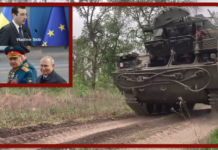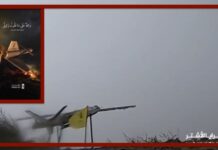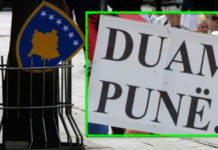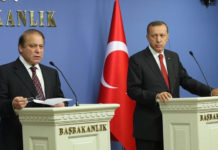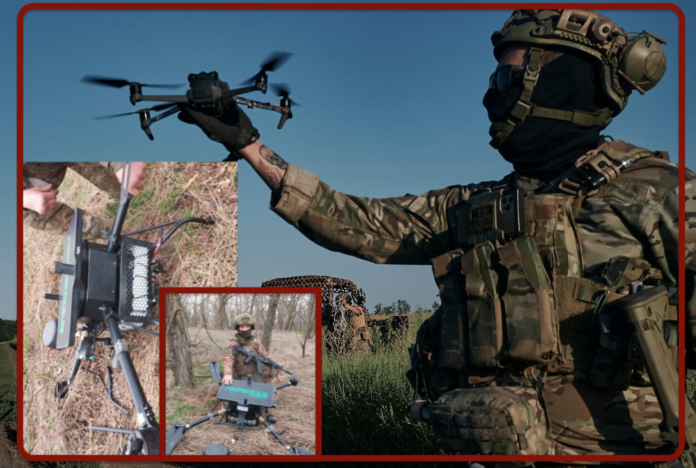
Among the most debated topics in the military social sphere in the conflict between Russia and Ukraine, the issue of drones often emerges, particularly for the Russians there is the nightmare of small Ukrainian UAVs and the shortage of FPV drones in the Russian armed forces.
Analysis of the situation in different areas shows that the Ukrainians are many times superior to the Russian army in the use of FPV drones. At the same time, Kiev has a greater range of use (up to 30 km) thanks to the expansion of repeaters on hexacopters (“Baba Yaga”) and aerial-type UAVs.
Therefore, in the direction of Kherson, Ukrainian drones prevent an effective assault on the village of Krynki, where active operations have resumed for a few days. Electronic warfare systems supplied to the Russian armed forces are not always able to cope with the frequencies.
On the Zaporozhzhie front, the Ukrainian armed forces are also increasing the use of FPVs and with them control the Tokmak road. Senator of the Zaporozhye region Rogozin has written several times about the issue of FPV, as well as about new silent hexacopter bombers.
In the direction of Chasiv Jar, the situation from the ground is described as difficult, again due to the FPV drones of the Ukrainian Armed Forces. Over the past few days, rough daily statistics have been reported from the camp: Ukrainian units are using 500 to 700 FPVs as they reach the “road of life” towards Artemovsk (Bakhmut). Range is also provided by Ukrainian drones with repeaters. Furthermore, the Ukrainians are able to operate multiple drones at the same time, which indicates that they are controlled at different frequencies. Such massive use of them on different control channels neutralizes the work of the electronic warfare systems of the Russian Armed Forces, even if they are available and operated correctly.
At the same time, Russian units participating in the assaults on Chasiv Jar can use dozens of times less than similar FPVs on a daily basis, most of which do not reach the objective.
A systemic problem in Russian active units is orders directed to front-line soldiers that prohibit them from reporting problems to those arriving from the higher command bodies (formations and lead units), since the solution of these problems is subsequently transferred to the command inferior without providing the necessary means and resources.
Among the ongoing projects in the Russian ranks is diversifying FPV production, including with existing units, which requires the provision of adequate financing. The uniform unification of the FPVs produced will once again lead to a rapid search by the Ukrainian Armed Forces for means to counter them and level out efforts.
According to what we understand from the social sphere, among the problems for the increase in the production of drones are the requirements of the federal customs service, which make the supply of components difficult, military bureaucracy and support for a small number of development teams.
Ukrainians, on the other hand, are very good at constantly evaluating the situation and trying to adapt to current conditions. For example, the lack of artillery support from the Ukrainian Armed Forces is partially covered by the massive use of FPV drones.
The Ukrainians produce high-speed drones and deliver them by the hundreds every day to various front-line units, with volunteer organizations acting almost as main contractors. Ukrainian formations also do not forget about electronic warfare and actively exploit the long-standing problem of Russian unmanned aerial vehicles: the almost complete monopoly of the main supplier of FPV drones, which is why a long-known model dominates the frequencies of the troops. Ukrainians interfere with Russian frequencies, leaving Russian Armed Forces units without functioning FPV drones.
The Ukrainian Armed Forces are rapidly trying to implement the latest innovations in unmanned aerial technologies: thus, more and more tests of a swarm of drones, five to eight UAVs at a time, are seen along the LBS. It is easy to estimate the threat this poses if used en masse on the battlefield.
Russian social sources say that Ukrainian FAs are adapting much more quickly and successfully testing products from new FPV drones to large UAVs flying in St. Petersburg and Tatarstan.
Graziella Giangiulio


